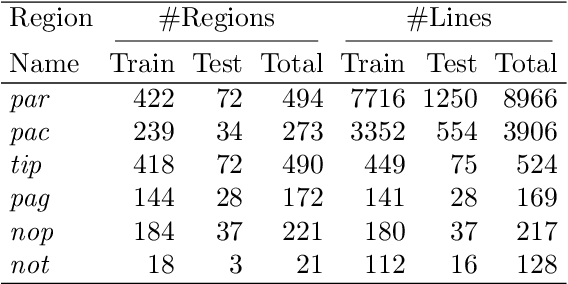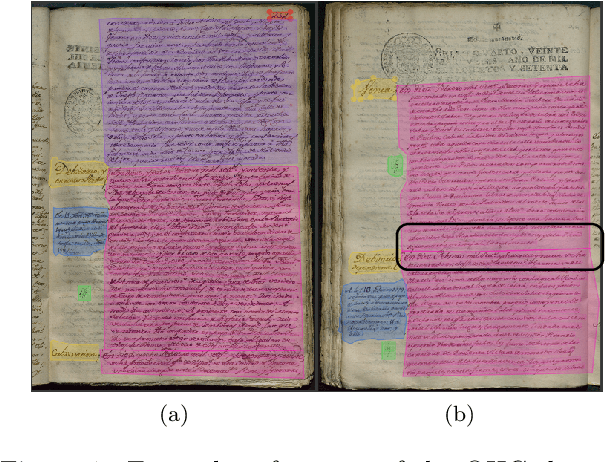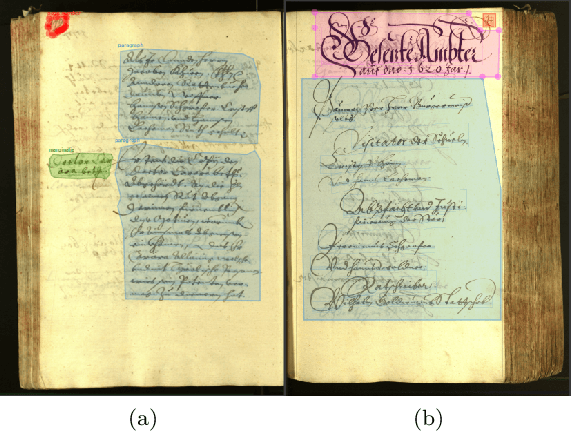Evaluation of a Region Proposal Architecture for Multi-task Document Layout Analysis
Paper and Code
Jun 22, 2021



Automatically recognizing the layout of handwritten documents is an important step towards useful extraction of information from those documents. The most common application is to feed downstream applications such as automatic text recognition and keyword spotting; however, the recognition of the layout also helps to establish relationships between elements in the document which allows to enrich the information that can be extracted. Most of the modern document layout analysis systems are designed to address only one part of the document layout problem, namely: baseline detection or region segmentation. In contrast, we evaluate the effectiveness of the Mask-RCNN architecture to address the problem of baseline detection and region segmentation in an integrated manner. We present experimental results on two handwritten text datasets and one handwritten music dataset. The analyzed architecture yields promising results, outperforming state-of-the-art techniques in all three datasets.
 Add to Chrome
Add to Chrome Add to Firefox
Add to Firefox Add to Edge
Add to Edge